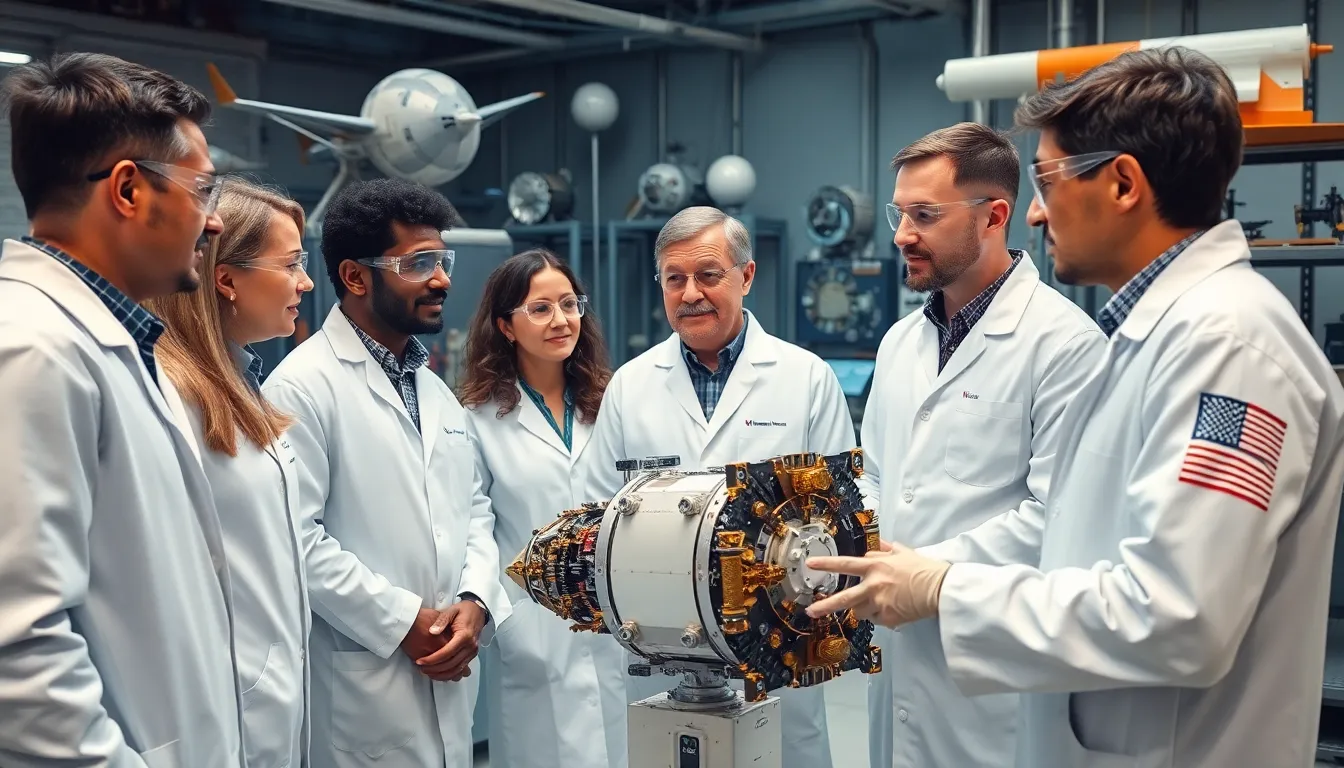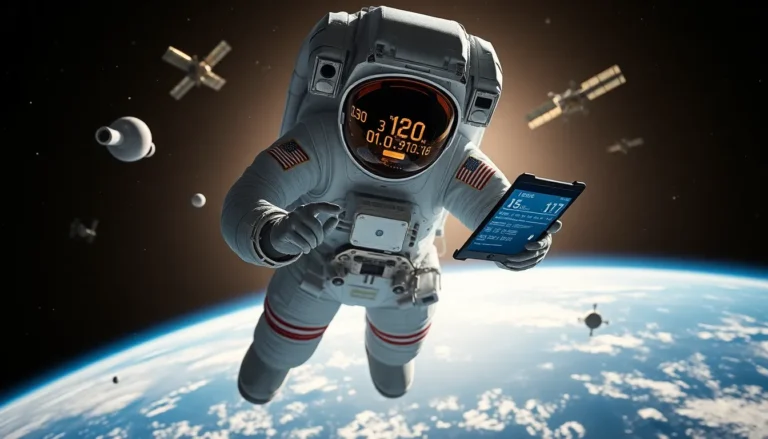The space industry isn’t just for astronauts and rocket scientists anymore. With a growing number of initiatives blasting off, it’s becoming the playground for innovators, entrepreneurs, and even those who just want to say they’ve been to space. From satellite technology that helps navigate your morning commute to ambitious plans for Mars colonization, the cosmos is buzzing with activity.
As companies race to stake their claim beyond Earth, the possibilities seem endless—and a bit mind-boggling. Who knew that getting to the stars could also mean launching new job opportunities, fostering international collaboration, and maybe even finding a new place to escape the in-laws? Buckle up as we explore these exciting initiatives that are propelling humanity into the final frontier.
Table of Contents
ToggleOverview Of Space Industry Initiatives
The space industry now encompasses various initiatives that extend beyond traditional boundaries. Organizations focus on satellite technology, enhancing communications and providing critical data for various sectors. Innovations in reusable rocket systems significantly lower launch costs, making space more accessible.
Programs aimed at Mars colonization advance rapidly, with private companies and government agencies collaborating on ambitious plans. Various partnerships also promote international cooperation, allowing countries to share resources, expertise, and technology. This collaborative effort enhances scientific research and encourages educational opportunities in STEM fields.
Investment in asteroid mining initiatives aims to explore and utilize resources in space. Such ventures could provide materials for future space missions while alleviating resource scarcity on Earth. Initiatives addressing space debris management are gaining traction too, as this problem presents challenges for current and future missions.
The increased interest in space tourism has launched several new ventures. Companies now offer suborbital flights, targeting a commercial market eager for unique experiences beyond Earth’s atmosphere. Emerging startups develop innovative space habitats designed for human habitation on celestial bodies.
Support from governments fosters growth through grants and incentives, further encouraging innovations. Research and development agencies continuously evaluate breakthroughs, aiming to maximize the benefits of technology in space exploration. Public interest in space-themed events and educational programs also increases, fueling enthusiasm for the industry.
These interconnected initiatives shape the future of humanity’s relationship with space. Each effort contributes to an expanding overall vision, promoting exploration, economic growth, and sustainability.
Key Players In The Space Industry

The space industry thrives on contributions from both government agencies and private enterprises. These players are pivotal in shaping current and future initiatives.
Government Initiatives
Government agencies drive many critical programs in the space industry. NASA leads efforts in exploration and technology development, supporting missions like Artemis aimed at returning humans to the Moon by 2024. The European Space Agency collaborates with international partners, promoting joint missions and research. Funding for satellite development often comes from strategic government investments, ensuring advancements in communications and climate science. Space Force, a relatively new branch in the U.S. military, enhances national security through satellite surveillance and growing space capabilities. Overall, these initiatives foster technological progress while bolstering international cooperation.
Private Sector Innovations
Private companies are redefining access to space through innovative solutions. SpaceX transforms the industry with its reusable Falcon rockets, significantly lowering launch costs and increasing mission frequency. Blue Origin focuses on suborbital flight experiences, making space tourism a reality for civilians. Rocket Lab introduces small satellite launches, catering to emerging businesses needing flexible deployment options. There’s also increasing investment in asteroid mining ventures, which could provide essential resources for Earth’s growing demands. Startups are exploring advanced habitats for potential extraterrestrial colonization, pushing the boundaries of human habitation beyond Earth.
Technological Advancements
Technological advancements drive the space industry’s growth and innovation. From satellite technology to launch systems, these developments shape exploration and commercial opportunities.
Satellite Technology
Satellite technology plays a vital role in enhancing global communications and collecting critical data. Innovative microsatellites, for instance, offer affordable solutions for varied applications, including Earth observation and weather monitoring. Companies are actively developing small satellite constellations that provide near real-time data access, improving decision-making across sectors. Additionally, advancements in optical communication systems are bringing faster data transmission capabilities, enhancing bandwidth for remote areas. Innovations in satellite propulsion systems are also leading to more efficient maneuvers and longer operational lifespans. With these developments, satellite technology continues to redefine connectivity and data analytics in the space industry.
Launch Systems
Launch systems significantly impact space accessibility and cost-effectiveness. Reusable rocket technology, exemplified by companies like SpaceX, optimizes launch expenses by allowing multiple flights using the same hardware. Each successful re-launch reduces the financial burden on satellite deployments. Furthermore, advancements in elective propulsion systems are improving launch efficiency and performance. This progress not only enables heavier payloads to reach orbit but also shortens launch windows. Various stakeholders in the industry collaborate to enhance regulatory frameworks, simplifying the permitting process for new launch vehicles. Collectively, these initiatives contribute to a more robust and efficient space launch market.
Environmental Considerations
Sustainability in the space industry is increasingly relevant as concerns about environmental impact grow. Spacecraft emissions, including those from launch vehicles, contribute to atmospheric pollution and climate change. Initiatives aim to develop greener propulsion systems that minimize emissions during launches and operations.
Managing space debris remains a significant challenge. Reports indicate that thousands of pieces of debris orbit Earth, posing risks to active satellites and future missions. Companies are exploring innovative solutions for debris removal, such as robotic arms and nets, to clear pathways for future exploration.
Resource utilization also plays a crucial role in sustainability initiatives. By focusing on asteroid mining, the space industry can access materials without further depleting Earth’s resources. Extracted resources from asteroids may include water, which could support missions deeper into space and reduce the need for Earth-based supplies.
Environmental regulations are evolving to address the growth of commercial space activities. Compliance with these regulations ensures that launches and operations follow guidelines that protect the atmosphere and reduce ecological risks. Governments and international bodies are collaborating to establish standards that promote responsible practices in the space sector.
Collaboration among private enterprises and government agencies fosters initiatives focused on environmental stewardship. Public-private partnerships drive funding and research towards sustainable technologies. The Artemis program, for instance, emphasizes both lunar exploration and sustainable practices to support long-term human presence on the Moon.
Public interest in environmental aspects of space initiatives highlights the importance of educational outreach. Engaging communities through programs that promote sustainability in space exploration cultivates awareness of the industry’s impact. These efforts ensure that the space industry’s growth aligns with environmental preservation and responsible innovation.
Future Trends And Challenges
Rapid advancements in satellite technology promise enhanced communications and data capabilities. Innovations in microsatellites and optical communication systems boost accessibility and transmission efficiency. Increased investment in reusable rocket systems lowers launch costs, paving the way for greater space accessibility for entrepreneurs and researchers alike.
Mars colonization remains a central focus for the future, with both private companies and government agencies collaborating on ambitious plans. These collaborations not only share resources but also drive technological advancements and boost international cooperation in space exploration. Furthermore, asteroid mining initiatives gain traction, addressing resource scarcity and opening potential for sustainable resource utilization.
Space tourism is another growing sector, with initiatives offering commercial suborbital flights. Emerging startups focus on developing habitats suitable for human habitation beyond Earth, reflecting a broader interest in long-term extraterrestrial colonization. The role of government agencies, such as NASA and the European Space Agency, remains vital in guiding these efforts.
Environmental considerations become increasingly critical as the industry evolves. Support for initiatives targeting sustainable propulsion systems ensures a responsible approach to exploration. Addressing space debris management is essential for safeguarding current missions and future endeavors, creating a safer environment for satellite operations.
Public interest continues to escalate, reinforcing the importance of educational outreach and awareness regarding the industry’s impact. Collaborative efforts among private enterprises and government organizations foster innovation while focusing on sustainability. Each of these elements will shape the ongoing relationship between humanity and space, driving exploration, growth, and responsible engagement with the cosmos.
The space industry is undergoing a remarkable transformation driven by innovation and collaboration. With diverse initiatives reshaping the landscape from satellite technology to Mars colonization the potential for growth and exploration is immense. As public interest surges and investment flows into sustainable practices the future of space looks brighter than ever.
Key players are working together to overcome challenges and harness opportunities that lie beyond Earth. This dynamic environment not only fosters technological advancements but also emphasizes the importance of responsible exploration. The ongoing commitment to sustainability and international cooperation will ensure that humanity’s journey into space is both ambitious and mindful of its impact. The next chapter in space exploration is unfolding with exciting possibilities on the horizon.





